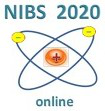Speaker
Description
For current and future large scale tokamaks, neutral beams for heating and current drive are generated from the neutralisation of large negative ion beams with powers up to 40 MW and energies up to 1 MeV. These beams are created by electrostatically extracting negative ions from a low temperature/pressure hydrogen or deuterium plasma, and accelerating them through a series of grids, resulting in a beam comprised of many hundreds of beamlets. Due to their negative charge, electrons are also extracted from this plasma. Were they to undergo acceleration to the full energy, these co-extracted electrons would reduce efficiency due to the additional accelerated current, and cause high heat loads on beamline components. To prevent this, permanent magnets are embedded in the second grid, the field of which deflects co-extracted electrons out of the beam at a low energy. This field also affects the negative ions as they are accelerated, causing beamlets to exit the grid system with a residual offset and deflection angle. Due to the alternating orientation of the magnetic field, this alternates row-by-row, and causes an observable zig-zag pattern of the beamlets in many ion sources. This adversely affects the overall divergence of the beam, and compensation is foreseen in future devices.
Measurements of the residual deflection of a single beamlet have been carried out at the BATMAN Upgrade test facility by calculating relative beamlet angles from beam emission spectroscopy (BES) spectra, and through the use of one-dimensional carbon fibre composite (1D-CFC) tile calorimetry to find beamlet positions. In this work, the amount of beamlet deflection is shown to change significantly, by up to 0.7° (12 mrad), depending on the operational parameters used. As is to be expected from a simple theoretical treatment, the beamlet deflection angle is observed to be affected by changes to the voltages of the acceleration system. However, the beamlet deflection angle is also observed to change with RF power, which, to a first approximation, should only affect beamlet divergence, and not the deflection. Other source parameters that should only affect the plasma are also demonstrated to impact the beamlet deflection angle, but it was not yet possible to determine which of the source filling pressure, filter field strength, or plasma grid bias current play a role and to which extent.
Whichever are the underlying reasons for changes to the beamlet deflection angle with operational parameters that, to first approximation, should only affect the plasma, it is clear that the deflection is not constant. This has implications for devices that are planning to use compensation methods for beamlet deflection, as these methods may not be effective outside of a narrow operational space.
This work has been carried out within the framework of the EUROfusion Consortium and has received funding from the EURATOM research and training programme 2014-2018 and 2019-2020 under grant agreement No. 633053. The views and opinions expressed herein do not necessarily reflect those of the European Commission.

